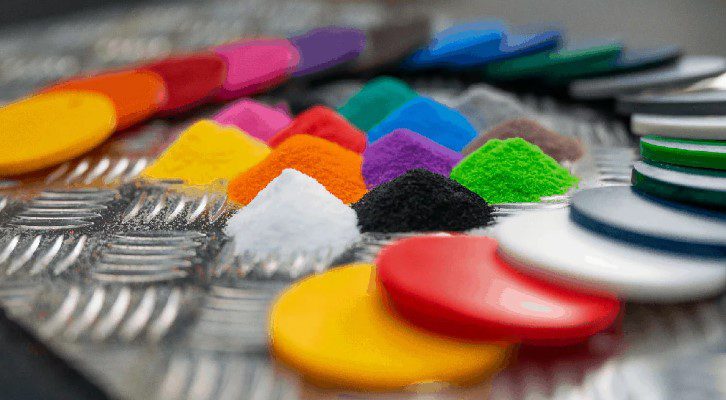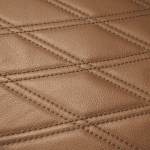A few examples of thermoplastics are discussed in this article.
Many everyday products are made of thermoplastic materials, such as plastic bags and food packaging. Medical devices, clothing, and other items that require flexibility and durability are also made from them.
Thermoplastics include:
Thermoplastic materials are used in the following applications:
Examples of amorphous polymers
• Applications of ABS (ABSCOM® ABS Plastic) polymers include automotive, leisure, and hygiene. The following applications can be used to separate ABS polymer compounds:The following applications can be used to separate ABS polymer compounds:
- ‘Easy Flow’ – ABS polymer grades with a higher ‘melt flow’, such as ABSCOM® F350 and ABSCOM® S105.
- ‘High Impact’ – ABS grades with a notched impact of around 25 kJ/m2. A 40 kJ/m2 impact is powerful enough to withstand a car crash, putting this impact strength into perspective.
- High heat – ABS polymer grades are suitable for applications requiring a high level of heat, such as the drying process of automotive paint. A number of ABSCOM® grades are available, including ABSCOM® T4100 and ABSCOM® T4060. Read our in-depth article about ABSCOM® T4060, which also contains information about ABSCOM® T4100, for more information about Hi-Heat ABS.
- ‘Flame Retardant’ – ABS plastic grades such as ABSCOM® FR1000 meet strict UL 94 V0 specifications. The meaning
ABSCOM®, a thermoplastic compound, has a wide range of applications in automotive, leisure, and hygiene. Each of our products is designed to meet the needs of our customers. Our goal is to develop innovative products that improve performance while reducing environmental impact. What is your experience with ABSCOM® products? Feel free to share your experience with them.
• It is primarily used for outdoor weather-intensive applications, including garden equipment and exterior finishers on cars. ASA (ASACOMTM ASA Plastic) polymer applications: primarily used for outdoor weather-intensive applications. The following applications can be used to separate ASA polymer compounds:
- “Easy Flow” ASA material grades with a melt flow index (MVI) of 20 g/10min or higher (ISO 1133). Automotive exterior covers and gardening equipment are among the applications. ASACOMTM S5000 and S9500-10 are popular grades.
- “High Heat Modified” – ASA materials with a Vicat Softening Point B/50 of 106 degrees celsius or higher (ISO 306). ASACOMTM S9333 is one of the grades available. In our case, it is an ASA/PC/PMMA blend that is best for automotive exterior applications. Furthermore, this material type has outstanding weatherability properties, such as gloss and colour retention.
• Lighting housings made from PC-COMTM (Polycarbonate) can be used in automotive or interior lighting systems.
• Applications of PC-ABSCOMTM PC ABS Plastic (PC/ABS) polymer include anything where ABS is simply insufficiently impact resistant, or where a higher softening point is required. In the case of automotive interior parts, such as dashboards, a high-impact crash or high heat during painting would be a good example.
• The FR PC-ABSCOMTM PC ABS Plastic (Flame Retardant PC/ABS) polymer is ideal for applications where superior impact alone is not sufficient. Applications such as battery casings and parts in contact with electrical components, such as heated enclosures, are examples. Flame retardant plastics are required for heated boiler taps, for instance; PC-ABSCOMTM B1000 and Bayblend® FR3010 & CYCOLOYTM C2950 are popular flame retardant PC/ABS materials.
• PC-ASACOMTM (PC/ASA) polymer applications include autonomous outdoor hardware such as robots requiring more impact resistance than PC/ABS. While PC/ABS is more resilient to impacts, it can’t withstand outdoor weathering, making it unsuitable for outdoor use.
• ABSCOM® FR1000 (FR/ABS) flame retardant polymer applications include washing machines, boilers, and anything electrical. FR PC/ABS material is not required or may be considered overkill in certain situations, such as when polymer flame retardancy is the primary concern.
Examples of semicrystalline polymers
Today, polypropylene (PP) is one of the most common plastics. Because it is more durable than glass, it is often used as an alternative to glass. The material is also much lighter than glass, so it is easier to transport. Car bumpers, torque indicators on lorry wheels, or parts that need to be manufactured at a low cost are some examples of large-volume parts that can be manufactured with this technology. The cost efficiency of polypropylene makes it ideal for 3D printing applications.
In addition to structural parts, polyamide (PA6, PA66) is used in car engine bay clips and seat belt holders.
• Fasteners, windscreen wipers, and other industrial applications can be made from polyester.






